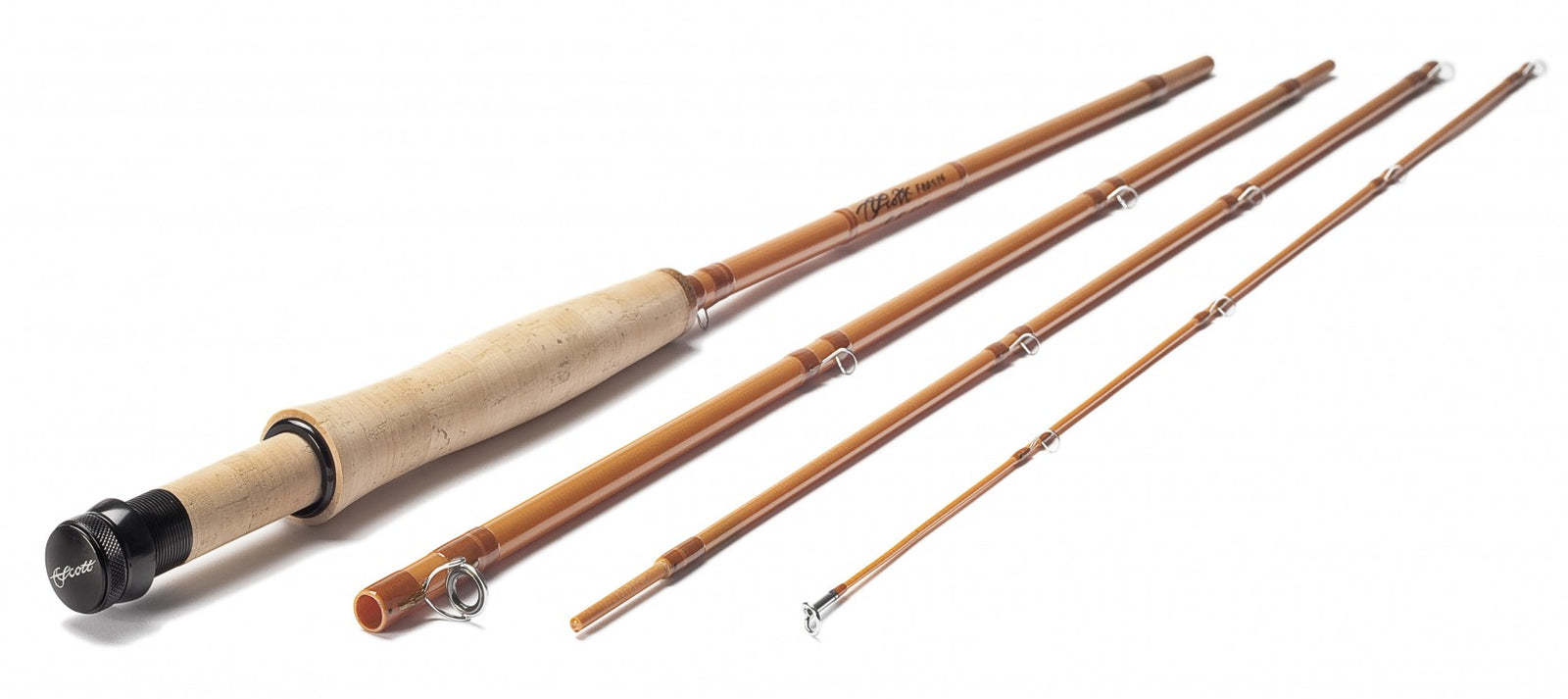Why you should fish Fiberglass

Ryan Gabert |
Fiberglass fly rods are making a comeback the last few years, and for good reason. Several companies are manufacturing high quality fiberglass rods, including Scott, Redington, and Echo. Many people scoff at the idea of paying current fly rod prices for "outdated" technology and feel, but there's several valid reasons to convert back to fiberglass, at least for certain types of fishing. Most fly rod companies are currently about "line speed" and power, so it's refreshing to fish a rod that has a slower pace occasionally. Here's a few considerations to make when deciding whether a fiberglass rod is up your alley or not.
What kind of water are you fishing?
If you're fishing indicators, split shot, and two flies on the Bighorn, fiberglass rods aren't going to be for you. However, if you're fishing dry flies on the side channels of the same river, fiberglass is right up your alley. When making any fly rod decision, you have to match the rod to the type of water that you're typically going to be fishing. Fiberglass is a great "fun" rod to have around - something to fish when you get tired of the typical nymphing with a 9' 6 weight. Fishing light emerger or dry fly rigs on big rivers is loads of fun with a medium weight fiberglass. With that in mind, fiberglass is going to feel most at home on smaller streams and creeks - 3 weight size places. Fiberglass, in my opinion, is the ultimate tool for fishing dry flies on smaller water. The slower paced casting rhythm, combined with the forgiving nature of fiberglass make them the best tool for fishing small streams.
Fish Size
While you can catch the biggest of trout on a fiberglass rod, they're not made for wrangling 25 inchers all day long. The heavier weights, like a 5 or 6 can do that, but I think you're losing the appeal of fiberglass when you reach up to those line weights. The 2-4 weights in these rods really shine, and make a 12 inch brookie feel like a steelhead. Even a four-weight fiberglass rod bends right down to the cork when attached to any reasonable sized fish, which makes fishing small water that much more fun to me. Places like Box Elder Creek, Elk Creek, Little Elk Creek, Hanna Creek, Little Spearfish, and countless other local streams are textbook fiberglass streams. If you're fishing streams where a 12 inch fish is a trophy, fiberglass rods could be your forte.
Presentation
Fish in small streams can be ridiculously spooky - you need to be on your A-game with your casting and presentation. This is another benefit to fish a fiberglass rod. Fiberglass flexes and bends so much that you can't get blazing line speeds out of it, which helps you make a better presentation. The slower line speed directly translates to a slower fly speed, which means less "splat" when your fly hits the water. Less splat means less spooked fish, which means catching more fish. Another benefit to fishing a slower glass rod is that you can manipulate your line while it's still in the air because it's moving slower - enabling you to move and manipulate your line around bushes, trees, and banks.
If you're going to have just one fly rod, fiberglass isn't going to be a logical option or choice for you - you won't get the versatility a fisherman with a single rod needs. However, if you're looking for a fun rod to add to your arsenal, fiberglass is definitely an option you should seriously look into. Come by and cast a few - you'll be pleasantly surprised!
Ryan
